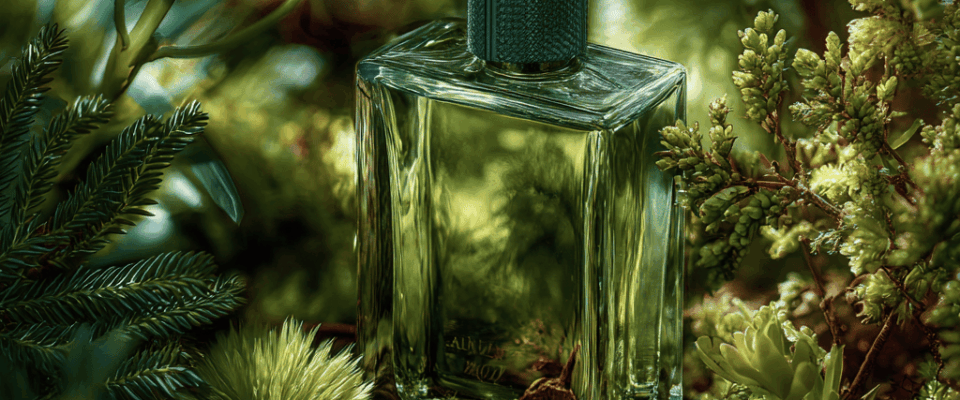Walking through a pine forest or a city park, you might not realize how much your nose shapes your sense of freedom. Green scents — those leafy, herbal, resinous notes — have long been linked with the wild, but even urban fragrances with metallic, concrete-like hints can evoke fresh spaces in a crowded mind. For hikers, campers, and city explorers, understanding how these scents affect your sense of connection to nature can transform your trail and even your daily routine.
Our noses don’t just detect smells; they build emotional landscapes. A touch of moss, a hint of cedar, or the faint tang of ozone after rain can anchor you “here and now.” But which direction pulls you closer to nature — the pure forest-green note or the edgy urban twist?
Where green scents start: a bond older than maps
Green notes come straight from wild places. Think cut grass, young leaves, herbs crushed underfoot. Long before perfumes, these smells were daily signals: safety, food, or shelter ahead.
For trekkers, the green family is familiar. It’s the scent that drifts from wet ferns after rain or the crackle of pine needles in the midday sun. Many hikers notice how just pausing to inhale a patch of moss makes them feel rooted. Green scents ground you — they’re humble, direct, uncomplicated.
This bond explains why natural perfumery often starts with green. Basil, sage, galbanum, vetiver — all these plants build bridges between a person and the land. When you carry a travel-sized green perfume on the trail, you don’t fight with the forest’s real aroma. You highlight it.
Urban fragrances: concrete jungles in a bottle
What about city-inspired scents? Surprisingly, they also have a place in a nature lover’s kit. Urban fragrances lean on mineral, ozonic, or even tar-like notes — the smell of wet pavement after rain or rust on an old metal bridge.
For many, these scents mean energy, modern edges, or the thrill of urban exploration. They can feel freeing in a different way: by reminding you of the places where nature pushes through cracks in the concrete. A city scent in your pack can be an anchor when your mind craves urban comfort while your body is deep in the woods.
Some urban fragrances now mix green touches — think ivy climbing brick walls or moss growing on an abandoned lot. These combinations create tension, which can be oddly comforting for city dwellers turned hikers.
How your mind reacts to green vs. urban scents
Studies show that natural green scents can lower your stress response more effectively than urban ones. When your brain detects a green aroma, it signals calm and safety. Your heart rate may drop, your breath slows, and your mind stays focused on your surroundings.
Urban scents often have the opposite effect: they energize, wake up your senses, and trigger curiosity. For some hikers, this boost is helpful at dawn or on challenging sections of a trail. A crisp urban spritz can sharpen your focus when your feet drag after hours in the wild.
Your reaction depends on what you associate with each scent family. If the city is your home and nature feels far, a mineral or metallic note may feel more grounding than wet moss.
Finding your perfect balance: mixing green and urban
There’s no rule that says you must choose one or the other. Many niche perfumes blend both worlds: fresh basil with a metallic note, or moss with a hint of asphalt. This layering mirrors how the real world feels — a trail near the city, a park growing from an old railway.
Two easy tips for hikers:
- Pack a green-based balm or oil for morning grounding moments.
- Keep a pocket-sized urban scent for a mental “kick” during challenging stretches.
You can train your nose to appreciate both. Try a simple test: inhale each note side by side and note how your body responds. Which helps you pause? Which sparks a sense of forward motion?
Scent rituals that deepen your outdoor connection
True trekkers know that packing lightly means choosing tools that work double duty. Scent is no different. A green fragrance can be a morning ritual — dab it on your scarf before stepping out of the tent. An urban twist can be your secret booster for late-day fatigue.
Some adventurers even use scent markers on gear. A spritz on a bandana, a pine sachet tucked in your backpack — these small moves turn your pack into a pocket-sized forest.
And when you return home, a whiff of that same note pulls you back to the trail instantly.
When scents don’t overpower but highlight the moment
Hiking is not about drowning nature in perfume. It’s about blending human scent with wild air. The best fragrances for trekkers respect the trail: subtle, travel-friendly, and aligned with the environment.
The real magic is how these scents keep you mindful. You smell the moss, and suddenly you’re aware of your steps. You catch a hint of metal and glass and remember how precious the green around you is.
Before you pack your next scent, read our practical guide on Essential trail kits: how to match your gear with your favorite fragrance — it might just help you balance fresh air and personal style.
Green or urban — neither is wrong. The key is what brings you closer to the feeling you crave. A forest in a bottle, or a city breeze that reminds you how nature reclaims every space in time. Trust your nose, pack light, and let your scent guide you to the “here and now.”
Questions and answers
They connect your brain to nature’s signals for safety and calm, lowering stress levels.
Yes, they can energize and add a modern twist, reminding you of the city’s raw edge in nature.
Try both in small doses, notice your body’s reaction, and pick what grounds or energizes you best.

